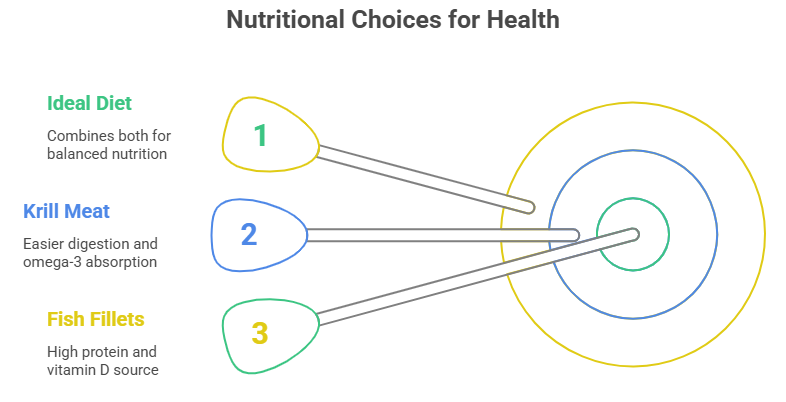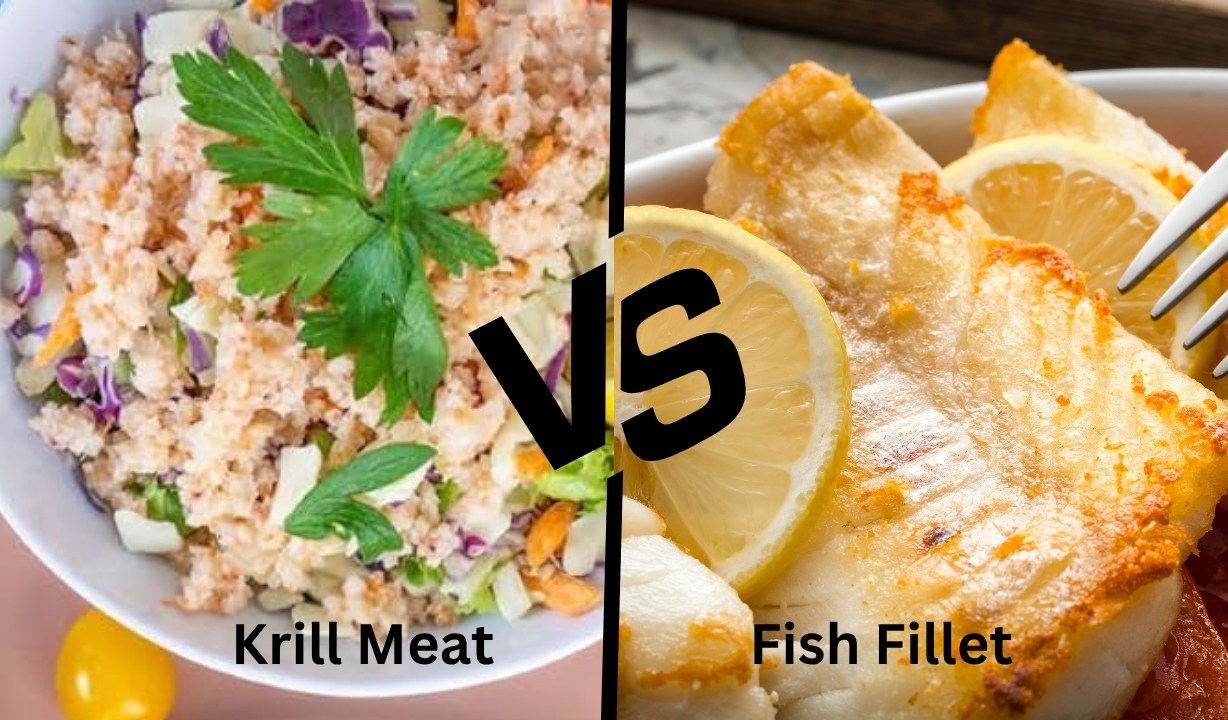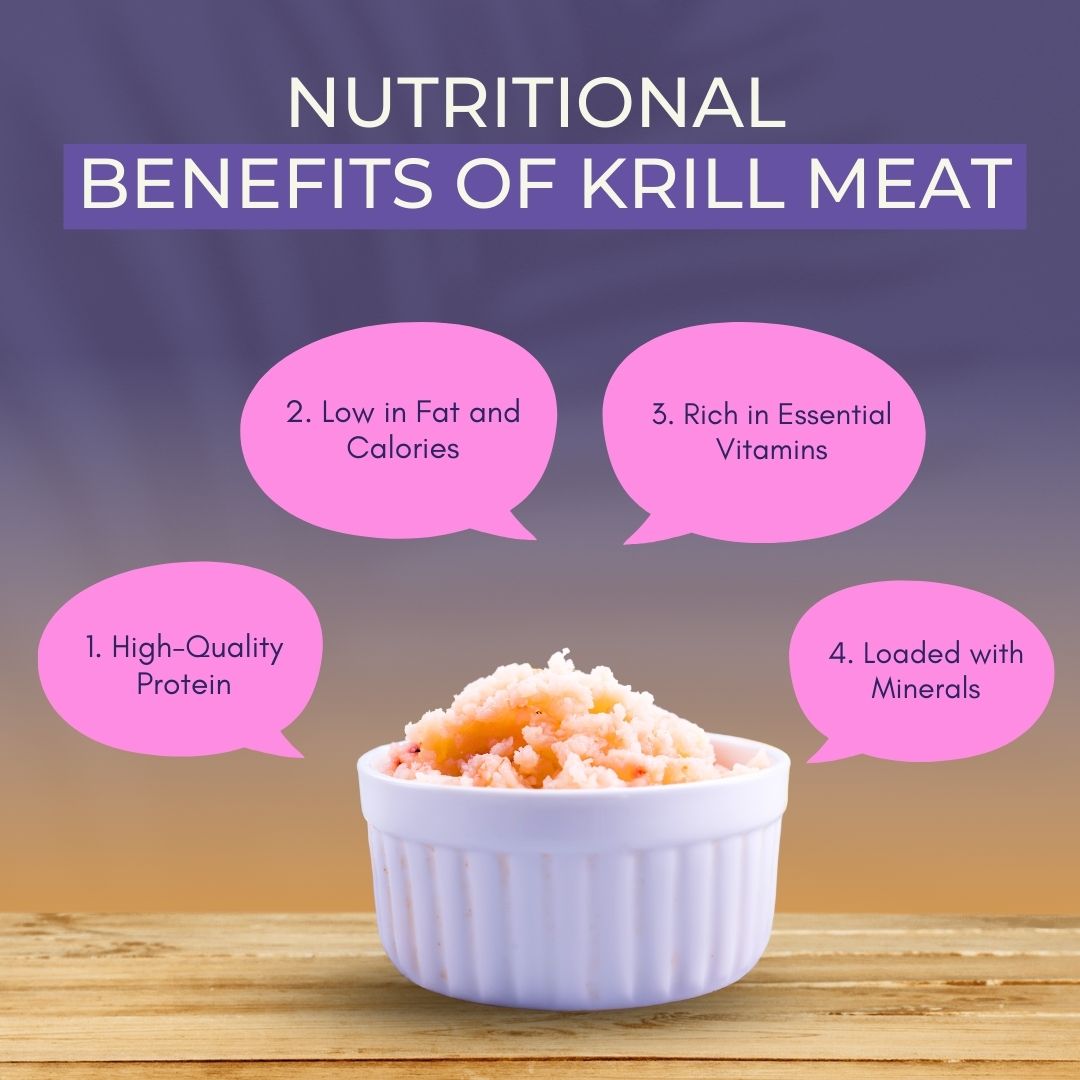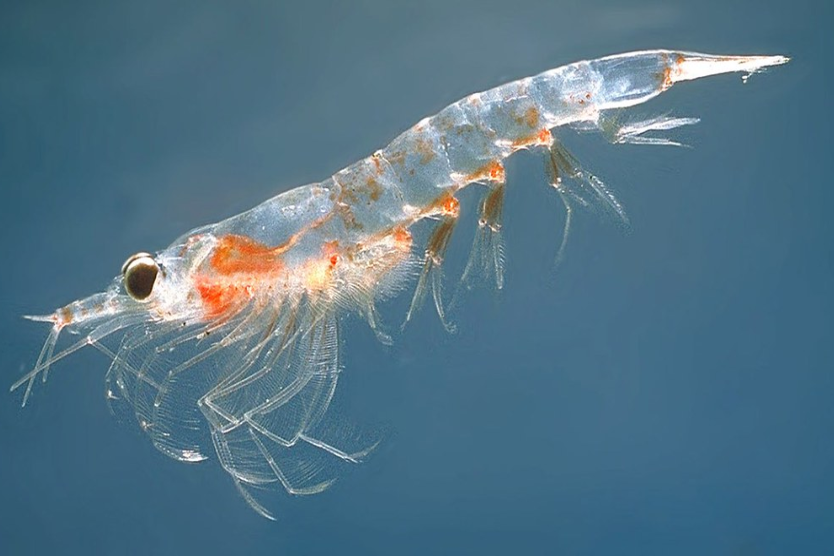Packed with lean protein, healthy fats, and essential nutrients your body needs, seafood is a staple in many diets. For many, a fish fillet like salmon, cod or tilapia has always been the go-to option. It’s familiar, versatile and trusted. But when it comes to choosing the best seafood, the debate between krill meat vs fish fillet is gaining attention.
But krill meat, harvested from tiny crustaceans in the cold Antarctic Ocean, is another seafood option worth considering. Thanks to its bioavailable omega-3s, antioxidants like astaxanthin and lean protein content, krill meat offers a well-rounded nutritional profile that supports overall wellness. Both sound like the best choices, but which one is actually better for your body?
In this article, we’ll compare krill meat and fish fillet side by side exploring their nutritional value, digestibility, environmental impact and culinary uses. If you’re trying to make smarter choices about the seafood you eat, this guide is for you.
What Are Krill Meat and Fish Fillets?
To fully understand the nutritional differences, it’s important to define what each of these seafood types is and how they are typically consumed.
What Is Krill Meat?
Krill meat comes from Antarctic krill (Euphausia superba), tiny shrimp-like crustaceans that feed on phytoplankton. Despite their small size, they’re packed with omega-3 fatty acids, high-quality protein and antioxidants. Because krill sits at the very bottom of the food chain, they contain significantly lower levels of mercury and toxins compared to larger fish.
What Is a Fish Fillet?
A fish fillet is a boneless cut of muscle from fish. Depending on the species, it can be rich in healthy fats (like salmon or mackerel) or leaner and lighter (like cod, tilapia or haddock). Fish fillets are widely consumed and valued for their high protein content and versatile flavor.
Krill Meat vs Fish Fillet: Key Nutritional Differences

When comparing krill meat vs. fish fillet, it’s not just about protein or calories it’s about how those nutrients are delivered and used by the body.
Omega-3 Fatty Acids: Phospholipids vs Triglycerides
One of the most significant differences between krill and fish lies in the form of omega-3s they provide.
- Krill meat delivers omega-3s in phospholipid form, which is more bioavailable. That means your body absorbs it more efficiently, allowing you to get the same or even better health benefits in smaller amounts.
- Fish fillets, by contrast, offer omega-3s in triglyceride form, which still provides benefits but requires more metabolic steps for digestion and absorption.
So, while both krill and fish provide these essential fats, krill’s form may make it easier for your body to absorb and use them effectively.
Protein Content and Amino Acids
- Fish fillets typically contain more protein per serving than krill meat. For example, a 3-ounce portion of salmon or cod can provide around 20 to 22 grams of protein, depending on the species.
- Krill meat provides around 15 to 20 grams of high-quality protein in the same serving size. While the amount is lower, the protein is still complete meaning it contains all nine essential amino acids.
Antioxidant Power
- Krill stands out with its natural content of astaxanthin, which helps protect cells from oxidative stress, supports eye and skin health and combats inflammation.
- Fish fillets (except wild-caught salmon) don’t offer meaningful antioxidant levels.
Vitamin and Mineral Comparison
Both krill meat and fish fillets provide a range of essential micronutrients, though each excels in different areas.
Krill meat is particularly rich in:
- Vitamin B12, which supports nerve function and red blood cell formation.
- Choline is essential for liver health and neurotransmitter function.
- Iron and zinc are key for oxygen transport, immune health, and skin repair.
Fish fillets offer more:
- Vitamin D, especially in oily fish like salmon and sardines, is crucial for bone health and immunity.
- Iodine, which supports thyroid hormone production.
- Selenium is a trace element with powerful antioxidant properties.
If you’re deficient in vitamin D or need extra iodine for thyroid support, fish fillets have the advantage. But if you’re focused on brain health, anemia prevention or liver detoxification, krill’s unique nutrient blend may be more aligned with your goals.
Digestibility and Tolerance
- Krill’s phospholipid omega-3s and smaller serving sizes make it easier to digest, with fewer “fishy burps.”
- Fish fillets can be heavier, especially oily fish like mackerel or sardines. Some people experience bloating or GI discomfort.
Beyond Nutrition: Environmental and Practical Considerations

Krill meat is considered more sustainable when harvested responsibly. Organizations like CCAMLR closely monitor krill fisheries to protect Antarctic ecosystems. Krill reproduce rapidly and are abundant, making them a renewable marine resource.
In contrast, commercial fishing for larger species like tuna or cod can contribute to overfishing, bycatch and habitat destruction. Some fisheries are responsibly managed, but not all.
If sustainability matters to you, certified krill products often have a lighter ecological footprint than many fish species.
Culinary Uses and Taste
While both are nutritious, taste and kitchen versatility matter too.
- Fish fillets are extremely versatile: grill, bake, pan-fry or poach there’s a method for every palate. Their texture and flavor vary widely across species, from mild tilapia to rich, buttery salmon.
- Krill meat has a mild, slightly sweet flavor, similar to shrimp or crab. It works best in salads, seafood rice dishes, stir-fries or even blended into protein-rich dips. It’s not as well-known but offers creative new culinary possibilities.
So, Which One Is More Nutritious?
It depends on your health priorities:

- Choose fish fillets if you want more protein, a hearty main course or are seeking vitamin D and iodine.
- Choose krill meat if you want easier digestion, better omega-3 absorption or extra antioxidant support.
- If sustainability or low toxin exposure is a concern, krill is likely the safer choice.
In an ideal diet, there’s room for both using fish fillets as an everyday meal and krill meat as a functional food to support brain, heart and immune health.
Conclusion: The Final Bite
In the debate of krill meat vs. fish fillet, there’s no universal winner just smarter choices based on your personal goals.
Fish fillets offer familiarity, versatility and strong nutritional value, especially for protein and vitamin D. But krill meat brings something unique to the table: highly absorbable omega-3s, powerful antioxidants and gentle digestibility making it a great addition for those looking to optimize heart, brain or inflammatory health.
Why not both? Add a grilled salmon fillet to your weekly menu, and try krill meat in a budget-friendly healthy meal like a stir-fry, wrap or even a protein bowl for variety. Choosing seafood wisely and sustainably can help you feel your best from the inside out.








